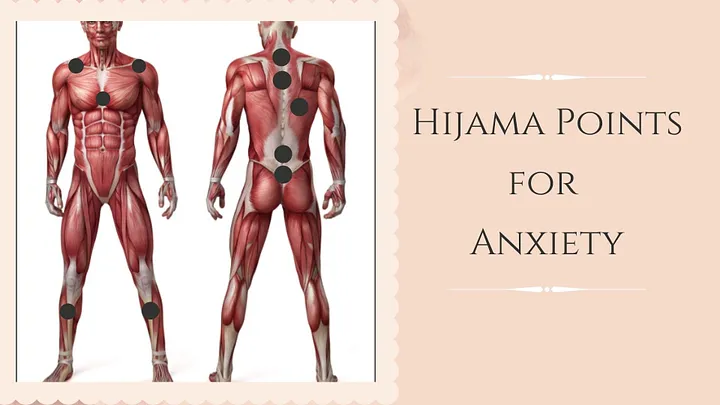No products in the cart.
Which Therapy Works Best With Obsessive-Compulsive Disorder (OCD)
Around 70 Million individuals worldwide have been diagnosed with Obsessive Compulsive Disorder at some point in their lives.
People with obsessive-compulsive disorder (OCD) experience obsessions and compulsions. It is an anxiety disorder that has affected one-third of the population around the world.
Sufferers of OCD have obsessive and compulsive thoughts that pop into their minds and cause anxiety attacks. These obsessive thoughts lead to repetitive behaviour that causes compulsions. These repetitive compulsions, such as washing hands, cleaning or counting things repeatedly may hinder daily activities and social interactions.
Common obsessions include:
- Fear of germs
- Fear of disorganization
- Destructive thoughts
- Passion to have things in perfect order
Common compulsions include:
- Washing hands or taking a bath repeatedly
- Arranging items in a precise way
- Checking things repeatedly
- Following a routine
- Counting or repeating words silently
- Avoiding going out or meeting people
Causes of OCD
Medical science is not able to understand why some people develop OCD. Some similarities and risk factors may increase the chances of developing OCD.
Inheritance: Scientists believe that genes are responsible for the development of OCD, though they are partly responsible as several other factors are also involved. Scientists are trying to connect the missing dots between genetics and OCD.

Brain Disorder: Several studies have found that misfunctioning of the front part of the brain and the deep structure of the brain may also cause OCD. Brain network plays a particular role in the development of obsessive thoughts and compulsive behaviour that are associated with anxiety and depression.
Childhood Trauma: Obsessive-compulsive disorder and childhood trauma may also be linked together. More research is needed to clarify the link between the two of them.
PANDAS Disorder: PANDAS (Pediatric Autoimmune Neuropsychiatric Disorder associated with Streptococcal infections) can also be linked to OCD. Children who get diagnosed with a strep infection may also develop sudden OCD symptoms.
Tic-related OCD: A new diagnostic for OCD is tic-related, which occurs in individuals with a history of tic disorder. It is estimated to occur in 10–40% of OCD cases diagnosed in childhood.
Extreme Behaviour: People who display extremely reserved behaviour, get anxious, express negative emotions and show excessive anger as children are most likely to develop OCD.
Treatment for OCD
There is no possible way to prevent OCD. However, several treatments may help to keep OCD from getting worse and help to co-operate with daily routine life.
1- Cognitive Behavioral Therapy (CBT)
CBT is a form of psychological treatment that is effective for severe mental illnesses, including OCD. It is a type of talk therapy that helps people learn to recognize harmful ways of thinking that create problems so that they can positively respond to the challenges of their lives. Talk therapy provides them with a sense of confidence to deal with difficult situations. This therapy helps to improve the way they feel and their state of mind.
2- Exposure and Response Prevention Therapy (ERP)
ERP is a behavioural therapy that slowly exposes people to situations that provoke individual obsessions. ERP helps them to cope with triggering situations. Although this therapy may initially cause anxiety, the continuity of the treatment may reduce compulsions and obsessive behaviour. For example, people whose OCD stems from fear of germs may wash their hands several times a day, a way to overcome their fear is to let them touch the doorknob to let them know that nothing happens with this act.
3- Hijama/Wet Cupping Therapy
Hijama Cupping Therapy is a well-known technique that removes toxins and impurities from the body. When cups are applied to the skin, blood circulation increases, as a result, enough oxygen and fresh nutrients are provided to the blood.
Performing Hijama on an OCD patient is not an easy task because these patients constantly feel anxious and fearful. They have obsessive thoughts that are difficult to control.
The first step is to talk to the patient and analyze whether they’re able to perform hijama or if are they ready for this therapy.
Hijama works very well to remove toxins, impurities and dead cells from the body. It also removes the pathogens that may cause physical and mental health issues. With the increase in blood circulation, cells receive a rich amount of oxygen and fresh nutrients. The chemicals are removed from the body, speeding up the healing process, mending the injuries and releasing muscular knots. Cupping therapy produces a calm and relaxed feeling in the mind and body.

The first few sessions should be performed continuously on the back and shoulders of the body as mentioned in the above picture.
When the muscles and tissues are flooded with healing nutrients and fresh oxygen, the body relaxes by itself.
There is a total of 9 sunnah points of the body where Rasool Allah (PBUH) performed Hijama Cupping therapy. These points are called the sunnah points and each sunnah point has extensive benefits. To learn more about the benefits of these sunnah points, click the link.

Dry cupping followed by moving cupping therapy releases muscular tension and boosts blood circulation in the targetted area. The massage-like sensation works very well to release anxiety and distress related to obsessive thoughts.

Performing Hijama on the head helps improve tissue and muscle stiffness, remove toxic blood, expel heat, help with pain management and relieve stress. Cupping therapy moves the toxins away from the head and harvests them out of the skin with the help of incisions made on the surface of the skull.
4- Mindful Meditation
In recent years, mindful meditation has gained immense popularity among OCD patients. The term “meditation” means to focus on the connection of mind and body that helps to calm the mind and enhance the well-being of the body.
Breathing exercise is another type of mindful meditation. The goal is to focus on breathing, letting the oxygen enter the body to balance the levels of oxygen and carbon dioxide in the blood. When a person slowly breathes through their nose, that calms the nervous system and reduces the levels of stress hormones in the blood.
5- Yoga
Like meditation, yoga has also gained popularity among people all around the world. Yoga is a combination of spiritual, physical and mental practice that manages stress levels and intrusive thoughts and reduces symptoms of anxiety and depression. Yoga helps to balance obsessive thoughts and compulsive behaviour and improves an individual’s quality of life. People with OCD have a higher rate of insomnia, they feel relaxed after a yoga session.
6- Exercise
Exercise may have been suggested for those individuals who suffer from obsessive-compulsive disorder (OCD). They might be tempted to ignore this simple statement, but there is a lot of research behind it. Stress and anxiety can naturally be reduced by exercise. According to scientists, when your body is in motion, your brain releases endorphins, hormones that soothe stress, improve mood, and lessen discomfort. While it can’t cure anything, it can lessen some symptoms.
7- A Well-Balanced Diet
Nutritional deficiencies may cause major health issues. However, taking a balanced diet is essential. A nutritious diet is the foundation of a strong and healthy body. The diet that helps to keep us strong is as under:
High-Fibre DietThe high-fibre diet helps to slow down the digestive process which means that they do not cause insulin levels to rise as quickly as carbohydrates do. A high-fibre diet includes:Whole grains, legumes, beans, lentils, nuts, seeds, Fruits, Berries, Vegetables, and a low-carbohydrate diet.
Anti-inflammatory DietAnti-inflammatory foods such as berries, fish, omega-3 fatty acids, leafy green vegetables, spinach, kale, tomatoes, almonds, walnuts, and extra-virgin olive oil help reduce inflammation and help with PCOS as well.
Protein Diet Lean protein food such as chicken, eggs, fish, and tofu is a healthy dietary option for women with PCOS.
Vitamins and Minerals Choosing nutrients rich in vitamins and minerals may also help to reduce the symptoms of PCOS.

Vitamin D as in salmon, eggs, mushrooms….
Vitamin B8 as in tuna, almonds, strawberries, corn, oranges, eggs….
Iodine as in Himalayan salt, eggs, yogurt, salmon….
Selenium as in eggs, cottage cheese, tuna, salmon, spinach….
Magnesium as in avocado, nuts, seeds, whole grain, bananas….
Healthy FatsConsuming healthy fats is very necessary for a properly balanced diet. Healthy fats not only increase hormone production but also help with the absorption of vitamins in our bodies.
Water-intake Individuals with OCD need to increase their water- intake. Hydrating yourself is essential to have a healthy body. Water is the best detoxifying natural agent. Water helps with weight loss, refreshes the skin, boosts physical performance, aids in digesting food regulates body temperature, maintains blood pressure and the list goes on.
Patients with mild to moderate OCD are usually treated with either several therapies as mentioned above or medication on an individual’s performance, their psychological conditions and how they are cooperating with the treatment. Several studies have indicated that deep brain stimulation may offer relief to OCD patients. However, it is highly complex to manage the electrodes inserted into the brain and the power battery is inserted in the patient’s chest.
Keeping up a healthy lifestyle can be beneficial for OCD patients. Overall mental health can be improved by getting enough good-quality sleep, maintaining a nutritious diet, exercising, and socializing with others. Additionally, practicing simple relaxation methods like yoga, meditation, massage and Hijama cupping therapy can help reduce tension and anxiety and manage day-to-day routine and quality of life.




Leave a Reply